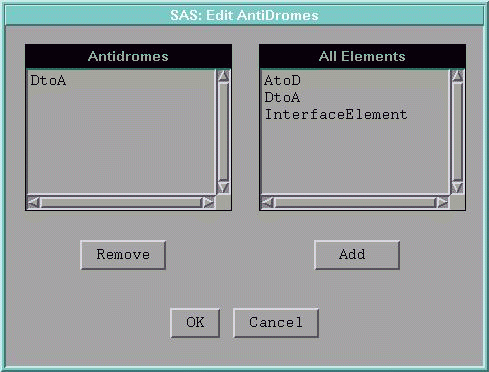Chapter Contents
Previous
Next
|
Chapter Contents |
Previous |
Next |
| Miscellaneous Features |

This system model contains three simple models - D/A model (white), InterfaceElement model (dark blue), A/D model (beige) - with unidirectional arcs connecting them. If a call comes in through the D/A model and then passes to the InterfaceElement model, you probably do not want it to go out through the A/D model. Most scenarios would have the call pass from the InterfaceElement model to some other model external to the LineUnit model. Antidromes address this problem.
Each simple equipment model keeps a list of its antidromes; an antidrome is defined to be another simple equipment model with which it cannot share a path. For instance, in the LineUnit model in Figure C.2, the D/A model would be an antidrome of the A/D model and vice versa. A simple equipment model may have zero or more antidromes, and an antidrome does not have to be part of the same system model.
All predefined Telecom system models in netWorks already have
their antidrome assignments.
If, however, you want to change the antidromes of a model,
you can do so by selecting Tools/Edit Antidromes... from
the pop-up menu on a simple equipment model to display the
Edit Antidromes dialog box. (See Figure C.3.)

|
Chapter Contents |
Previous |
Next |
Top |
Copyright © 1999 by SAS Institute Inc., Cary, NC, USA. All rights reserved.